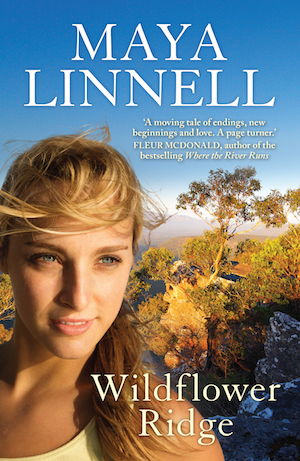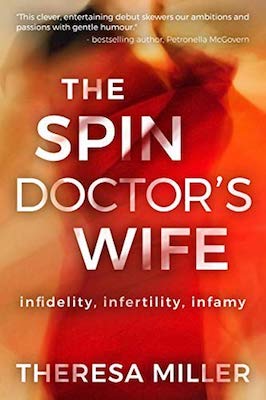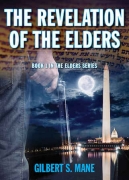Course Information
This course has payment options. Please click the ‘Enrol Now’ link to view the payment options.
Prerequisite: 10-Month Novel & Script First Draft course

A Three Draft Process
To write the best story you are capable of writing, you need to follow a three-draft process.
The First Draft
Writing a first draft is where you discover the possibilities of your story. You need to let it go and hang out there in the uncertainty exploring new possibilities. “The first draft is the down draft. You need to start somewhere. Start by getting something, anything, down on paper. You just get it down.” Anne Lamott
The Second Draft
This is where you will nail your story down, so that it works from beginning to end and you get the action, character arc and theme all working together. Something that is not possible in the first draft. “The second draft is the up draft – you fix it up. You try to say what you have to say more accurately.” Anne Lamott
The Third Draft
The third draft is where you learn the craft of re-writing and editing. You focus on the writing making sure every scene works, indeed every word is doing its job. “The third draft is the dental draft, where you check every tooth, to see if it is loose or cramped or decayed, or even, God help us, healthy.” Anne Lamott
We write to re-write
Writing a second draft requires a very different mindset, skill set and process to a first draft. Without a step-by-step process, accountability and constructive feedback along the way, you can easily go off track and waste a huge amount of time.
One Writer’s Experience doing the Second Draft course
Below is an email one of our writers, Suzanne King, spontaneously sent us during the course.
“I wondered if you could publish the below review on your website? I feel strongly about the benefits of this course. It has been such a learning curve and has so significantly lifted my story, that I just had to tell the world about it!
The Review
“You might be tip-toeing around, wondering whether to commit to this course, but all I can say is – don’t think, just dive in! You will be in for an exhilarating ride. You will feel stretched emotionally and creatively as you climb a massive learning curve and grapple with new concepts and new ways to see your story with fresh eyes. You’re not alone though! Your tutor will be there every step of the way and really help you to dig deep and find how to make your story really shine.
“If anyone thinks they have a fairly good First Draft that just needs a polish and tweak – think again! It is only with hindsight that you will look back and see the truth about your First Draft; that it was an insipid, pale version, lacking the thrill, grit and intrigue that should be there to make sure that your reader keeps on reading!
“So this course will definitely result in you achieving a vastly improved story. All you have to do as a writer is hold on to your resolve to keep going, keep moving forward, shake off the desire to just focus on your First Draft story and allow your creativity to soar. You won’t regret it!”
Expect a dramatic improvement

Pre-Course Work
Before the course begins you will be provided with a series of templates to flesh out and explore your story in more depth and explore your story from all your major characters’ points of view to ensure that the characters are driving your story.
This is a very important part of the process because in the Second Draft, rather than forcing your characters into the structure, you want to have your characters driving the structure of your story.
This will set you up to revision your story with your characters driving the story.
On The Process Of Re-Writing
“Finishing a first draft doesn’t make you a novelist. Anyone can do the rough draft of a novel and it probably won’t look much worse than the first draft of any good novel you can name.
“The difference between anyone and a serious writer is re-writing, re-writing and more re-writing, some times over a period of years. I can’t emphasise strongly enough how important this is, that writing leads to writing, that failed attempts lead to eventual success, that the solution of writing problems is made up of all the attempts that lead nowhere…
“The trouble is that when you’re just beginning to write, you may believe that words committed to paper are sacred, fixed, immutable. But you’re not dealing with a finished, printed, copyrighted book; only with an idea, a pile of words that change shape many times before they take shape as a book.” Dorothy Bryant
During the course you will:
Find and clarify the spine of your story. This is where your “story concept” will really pop to a level that is way beyond the scope of your first draft.
Work through the spine and craft your novel or screenplay one step at a time so that your story works logically and dramatically from beginning to end. You will dig much deeper into your story and characters and flesh out in any gaps.
You will produce a work that has a strong dramatic spine. The action, character journey and theme will all working together to create a cohesive structure that will resonate with readers.
Jan Christie wrote, “The Second Draft Course has made me acutely aware of the gaps in my story, things I thought I’d deal with later. Well, later is now and I have to deal with them before I move on.
“The clear methodical spine in the second draft has been instrumental in highlighting, sometimes in an acutely uncomfortable way, what works and what doesn’t. But in the process I’ve discovered new characters, new motivations, depth to both people and situations that wasn’t there before. It’s a challenge, but it’s also lots of fun.”
Don’t let what you perceive as the lack of quality of your First Draft put you off. You don’t have to go back and make your First Draft more complete. The pre-course work and the work you do in the first session will take care of this.
Many people only really start connecting with their story and falling in love with it in the Second Draft.

Course Structure
Part One: Finding the Organic Spine
You will start the process by finding a fresh Seven Turning Point Spine (this is more organic than the Eight Turning Points in the First Draft course). The new turning points ensure that you have the action, character arc and theme all working together.
Even though your story can and will continue to evolve, the Seven Turning Points you come up with in the first session will clarify the story you want to tell and provide a solid spine for your Second Draft.
Part Two: The Nitty-Gritty of Storytelling
Once you have identified your Seven Turning Points, you will systematically work through each of the Turning Points one at a time focusing on and maximizing the drama, emotional depth and character development.
You will start using Sequences, which are very different from the Sequences used in the First Draft Course, to create the dramatic spine of each Story Step. This extra layer of structure enables you to take what you have in your first draft and really flesh it out.
As well as focusing on the structure for each Turning Point, you will also do a series of writing exercises that will develop your connection to your character’s emotion and voice and help bring your writing to life on the page.
In each session you will work on the structure from one Turning Point to the next and do most of the heavy planning in class.
The Second Draft also features Sequence Outlining which allows you to be creative in your writing, character development and story structure without being bogged down in writing every scene. This we find to be the most effective approach.
What if I want to write a Different Story?
The vast majority of people continue working on their story from the First Draft Course. However, if you feel it necessary to write another story, there is scope to develop a new story from scratch.
Workshop Calendar Dates
1 February 2025 Course
All sessions run from 10am to 6pm except final session.
Workshop 1: Saturday 1 February
Session 1: Weekend Intensive Saturday and Sunday 15 & 16 February (including TP1)
Session 2: Saturday 15 March (TP2)
Session 3: Saturday 12 April (TP3)
Session 4: Saturday 10 May (TP4)
Session 5: Saturday 14 June (TP5)
Session 6: Saturday 12 July (TP6)
Session 7: Sunday 10 August (TP7) 2pm to 6pm & celebration
3 February 2024 Course
All sessions run from 10am to 6pm except final session.
Workshop 1: Saturday 3 February
Session 1: Weekend Intensive Saturday and Sunday 17 & 18 February (including TP1)
Session 2: Saturday 16 March (TP2)
Session 3: Saturday 13 April (TP3)
Session 4: Saturday 11 May (TP4)
Session 5: Saturday 15 June (TP5)
Session 6: Saturday 13 July (TP6)
Session 7: Sunday 11 August (TP7) 2pm to 6pm & celebration.